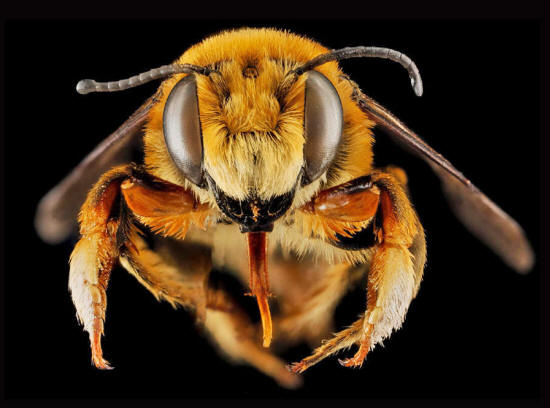|
by Christina Sarich
from
TheMindUnleashed Website
that if bees disappeared from the surface of the earth, the human race
would follow in 4 short years. Of 4,337 native bee species in North American and Hawaii just researched, 347 are precariously close to full-stop extinction.
No bees, no food, people. No morning coffee. No roses. No arugula for your salad.
Bees pollinate,
If you haven't been concerned about the bees' fight against herbicides, pesticides, and other toxic chemicals used in the industrial agricultural model it's definitely time to take notice.
In a report just released by the Center for Biological Diversity, scientists found that nearly one in four bee species is imperiled and at increasing risk of extinction.
347 bees species are close to extinction, but 700 species are in trouble (see Pollinators in Peril).
Kelsey Kopec, a native pollinator researcher at the Center for Biological Diversity and author of the study said,
The key findings of the study include:
With recent bee die-offs in the UK blamed on neonicotinoids, a class of pesticides now banned in many countries, school teachers have turned to beekeeping as a teaching tool to try to connect young children with these important pollinators.
Others have turned to planting bee-friendly plants in their gardens and purchasing local, raw, organic honey - but this may not be enough to save the bees without a massive overhaul of the industries which have contributed most greatly to their decline.
The main causes for colony collapse disorder, a name for the mass extinction of entire colonies of bees, are:
Bees are a unique part of our ecosystem and they need to be protected.
If we don't, then we're likely not far behind them...
|


